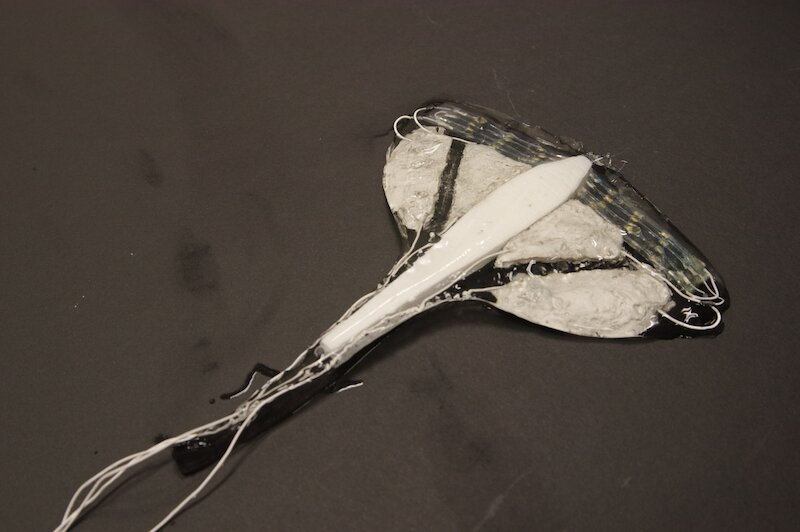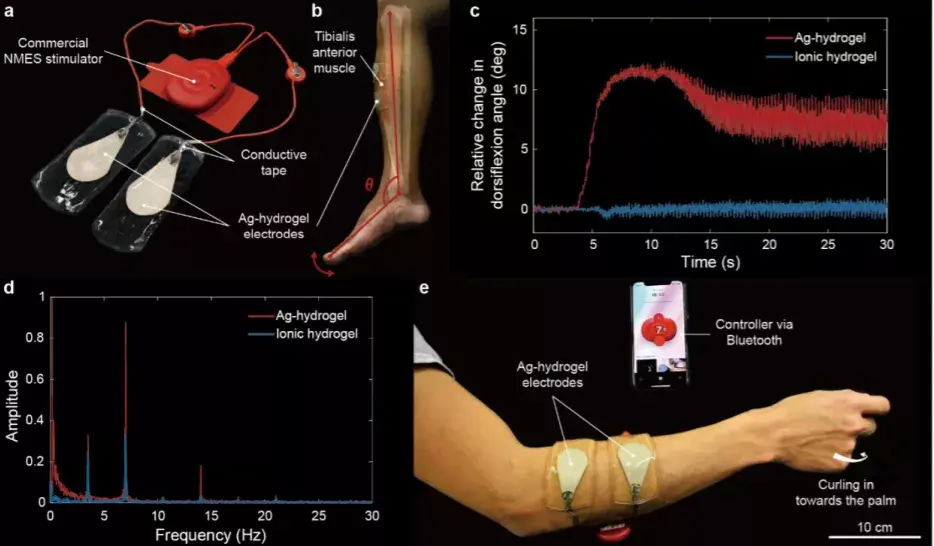As we all know, in the field of robotics, the advantage of metal materials is Durable, conductive, and high strength. But at the same time, they are often very heavy and rigid. These characteristics are definitely undesirable for flexible wearable systems and human-machine interfaces.
Hydrogel has the opposite characteristics of most metals - it is lightweight, malleable and biocompatible. It is an excellent material for making contact lenses and tissue engineering scaffolds, but its It is a poor conductor of electricity, which is essential in digital circuits and bioelectronics applications.
Recently, Carmel Majidi, a researcher at Carnegie Mellon University's Soft Robotics Laboratory, and his team developed a silver-hydrogel composite material that not only It has high conductivity and can still maintain deformation and compliance during the transmission of direct current.
The research results were published in the journal Nature Electronics under the title "A conductive silver-polyacrylamide-alginate hydrogel for soft electronics" Composite Materials" (An electrically conductive silver–polyacrylamide–alginate hydrogel composite for soft electronics).
First, they suspended micron-sized silver flakes in a polyacrylamide-alginate hydrogel matrix. Then, after a partial dehydration process, the flakes formed a conductive, And the permeable network can resist mechanical deformation, and then control the dehydration and hydration process, and can stick or separate the sheets, thereby forming a reversible electrical connection.
Previous attempts to combine metals and hydrogels have shown that while improving conductivity, compliance and deformability will always be reduced. Majidi and team used their previous expertise in developing stretchable liquid metals to tackle this challenge.
Silver-hydrogel composites have a range of properties, including compliance, deformability, and conductivity, making them excellent soft conductive materials for soft robotics. To demonstrate the material's potential in soft robotics, they built a stingray-inspired soft swimmer consisting of a pair of hydrogel pectoral fins and a streamlined spine made of soft foam.

Image | Close-up of a stingray-inspired swimmer (Source: Carnegie Mellon University)
They combined hydrogel pectoral fins with two sets of silver-hydrogel traces to create a compatible interface. Soft conductive traces serve as wires that carry high current (approximately 3.3 A) from a benchtop power supply to a pair of shape memory alloy (SMA) actuators without disturbing the natural deformability of the hydrogel pectoral fins. and compliance. Three layers of VHB tape are sandwiched between two SMA wires to form a soft actuator. Resistive heating is directly used to make the actuator bend up and down alternately.
To induce a forward swimming motion, they activated the upper pair of SMA filaments for 0.6 seconds and then cooled them down for 1.9 seconds, while the other pair of SMA filaments were activated and cooled down for 0.3 seconds and 2.2 seconds, respectively. seconds, then the upward and downward drive cycles are staggered with an offset period of 0.9 seconds. Experiments demonstrate that stingray-inspired swimmers move forward at an average speed of 0.2 body lengths per second. This demonstration highlights the conductivity and stability of silver-hydrogel by carrying high currents to activate embedded SMA actuators. .
"This new type of composite material is highly conductive and highly compliant (or 'viscous'), and has broad application prospects in bioelectronics and other fields. For example, tapes There are brain stickers with signal processing sensors, wearable power generation devices that can power electronic devices, and stretchable displays," explains Carmel Majidi, a professor of mechanical engineering at Carnegie Mellon University's Soft Robotics Laboratory.
It is reported that this silver-hydrogel composite material can be printed by standard printing methods such as template photolithography. Using this technology, researchers can develop skin electrodes for neuromuscular electrical stimulation.
"This composite material can cover large areas of the human body, acting like a second layer of neural tissue on the skin," Majidi said.
In order to verify the application potential of silver-hydrogel composite materials as electrodes in the field of epidermal electrical stimulation and recording, the team specially produced silver-hydrogel electrodes for neuromuscular electrical stimulation ( neuromuscular electrical stimulation (NMES) provides high-frequency electrical signals to demonstrate the bioelectronic properties of this composite material.

Figure | Neuromuscular electrical stimulation electrode (Source: Carnegie Mellon University)
They first connected a set of silver-hydrogel electrodes to a commercial muscle electrical stimulator, and then used the Bluetooth function of the smartphone to control the intensity and frequency of the pulses. For comparison, they also prepared non-filled hydrogel electrodes with ionic conductivity and performed NMES experiments under the same conditions. Experimental results show that the performance of the silver-hydrogel electrode is comparable to commercial NMES electrodes.
Future applications of this technology may also include the treatment of muscle diseases and movement disorders, such as for patients who have difficulty grasping things with their fingers after a stroke and patients with Parkinson's disease who are prone to tremors. provide help.
Articles are uploaded by users and are for non-commercial browsing only. Posted by: Lomu, please indicate the source: https://www.daogebangong.com/en/articles/detail/ka-nei-ji-mei-long-da-xue-yan-fa-du-te-de-yin-shui-ning-jiao-fu-he-cai-liao-jian-ju-dao-dian-xing-yu-shun-ying-xing.html

 支付宝扫一扫
支付宝扫一扫 
评论列表(196条)
测试